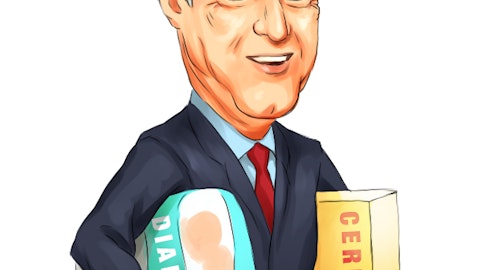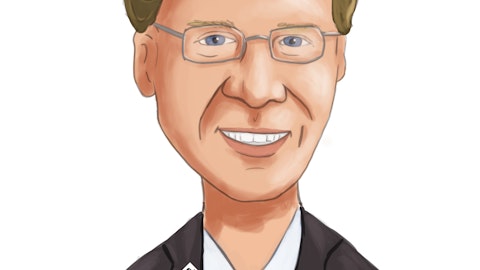Kelli Valade: Yes, it’s a great question. It is early in the year. We actually can tell that we have had a steady increase in some of the promotional offerings like AARP that we uniquely offer to, obviously, that demographic. And — so we do see that getting better since the depths of the pandemic. And then the flip side of that, we also do — we continue to skew younger all the time, not just in our virtual brands as we talked about earlier, off-premise, but continue to skew younger. That’s about the late-night daypart continuing to be more open all the time as well. That’s a good thing. But the — yes, we can see the baby boomer population is starting to rebound a bit.
Jon Tower: Got it. Thanks for taking the question.
Robert Verostek: Thank you.
Operator: Thank you. Our next question is from Andrew Wolf with C.L. King. Please proceed with your question.
Andrew Wolf: Great. Thank you. Regarding the franchisees getting to their stores open 24/7, is labor availability or sort of just their hiring practices and their ability to get people in and hire them, is that kind of still the key reason that you’re hearing from them that they’re not yet open operating 24/7?
Kelli Valade: Yes, it’s a great question. So, we continue to just — this is a collaboration. This is a — these are conversations daily. These are — I mentioned — we’ve mentioned in the past, we have literally segmented every single restaurant and have our operators talking to every single franchisee. It’s an ongoing conversation. So, while there’s more optimism as of late that you see everywhere around labor and the availability of labor, you also do see and have to — we have to be aware of and mindful of and consider the inflationary environment that still exists for so many of them. So, it is as much now about profitability as it is staffing. So, as that is eased, you’ve had other things that have contributed, not just lower volume, but things like 80/20 and things like just differences in wage inflation or the wage treatment that really do impact profitability.
So, it’s conversations about all of that. It’s why we’ve also got a task force. We’ve talked about no stone unturned. It’s why we’re looking at every opportunity to help them with margins as well as focus on how to profitably get them back to 24/7. And so we’ve said that before that we continue to look at every restaurant and assess their situation and that we may have less — and we definitely will have less than we did before the pandemic. And that remains to be the case. So, it’s a collaboration for sure and ongoing conversations.
Andrew Wolf: Okay. And just a follow-up to that is, I think — in the third quarter, you guys reported that the company restaurants were now fully staffed at that time. So, I guess they’re still fully staffed. Can you tell us a little about the sort of trade-off between training of new employees and them getting up the productivity curve that I assume is something that the franchisees want to know about because obviously, new hires are more expensive than seasoned folks are productive.
Kelli Valade: Yes, that’s exactly what’s happening. So, you’re right. So, we’ve been staffed now and have mentioned it, yes, last quarter, and we can now see the stability of what that does for guest sentiment scores. We can see what that does for training dollars. We can see all of that in our company restaurants, obviously. So, yes, there’s a natural learning curve that’s going to happen for every franchise location that gets back up. We’re helping them with that in any way possible, helping to kind of lessen that learning curve, but that’s certainly a play for all them. We see the traffic and the sales come back when they do that, but we’re also trying to just help them to strengthen all aspects of the P&L, which does, yes, absolutely include the training costs that go with that. It levels off, and it can level off fairly quickly once you get back into that rhythm, but that’s absolutely a good question and that’s part of what is happening as well.
Andrew Wolf: And the other kind of related question here is, as I understand the incentives to the franchisees, there’s a setup to do it sooner than later. So, there’s still a double-digit gap to get to 90% of the franchisees operating 24/7. Am I understanding that right, are they — are they still being incentivated right now at the same rate they were when things accelerated later in the fourth quarter? Or does that fade? I’m trying to understand, is it sort of going to get hard ?





